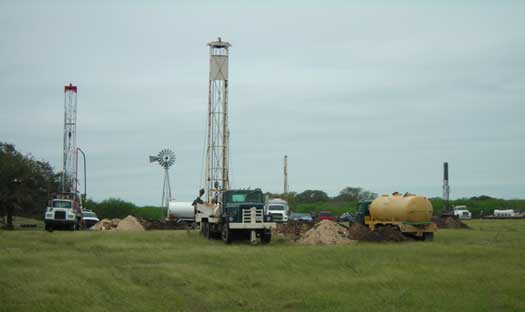New US mine set for development
22 December 2011
Uranium Energy Corp (UEC) has now obtained all the permits needed to proceed with development of its Goliad in-situ leach (ISL) uranium project in South Texas.
 |
| Exploration drilling at Goliad (Image: UEC) |
Having issued UEC with a draft Radioactive Materials Licence (RML) for the Goliad project in September, the Texas Commission on Environmental Quality (TCEQ) has now issued the final version. The company said that it "now has all the required permits to begin construction at the site, and the procurement of materials and initial wellfield development will commence shortly."
The Goliad project is located 64 kilometres from UEC's Hobson uranium processing facility, which forms the basis of its regional operating strategy in the South Texas Uranium Belt and processes uranium-loaded resins from its four near-by uranium projects into yellowcake (U3O8). UEC's Palangana ISL mine was licensed in January 2010 and is now ramping up initial production.
In March 2008, UEC announced updated resource figures for Goliad, putting measured and indicated resources to 5.475 million pounds U3O8 (2100 tU). An additional 1.548 million pounds U3O8 (595 tU) has been classified as an inferred resource. All the figures are at cut-off grades of 0.05% U3O8, and are reported in accordance with Canadian National Instrument 43-101.
Commenting on the issuance of the RML, Amir Adnani, UEC president and CEO, said: "Management is pleased to report the completion of this major milestone, and to initiate the early steps in the construction process."
The company noted that an aquifer exemption is still required before uranium recovery activities can be initiated at Goliad. These are issued jointly by the regional Environmental Protection Agency (EPA) and the TCEQ, and only the EPA's approval is outstanding.
ISL mines pass a leaching solution - such as oxygen with sodium carbonate - through buried sand containing uranium, dissolving it on the way. The solution is then pumped to the surface. The uranium is removed from the solution using an ion-exchange process. Usually the ion-exchange resin or solvent would undergo stripping and precipitation on-site to remove uranium.
Researched and written
by World Nuclear News